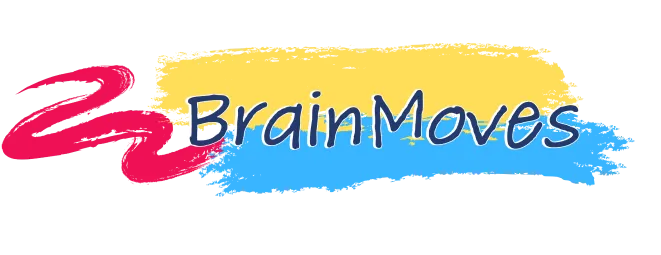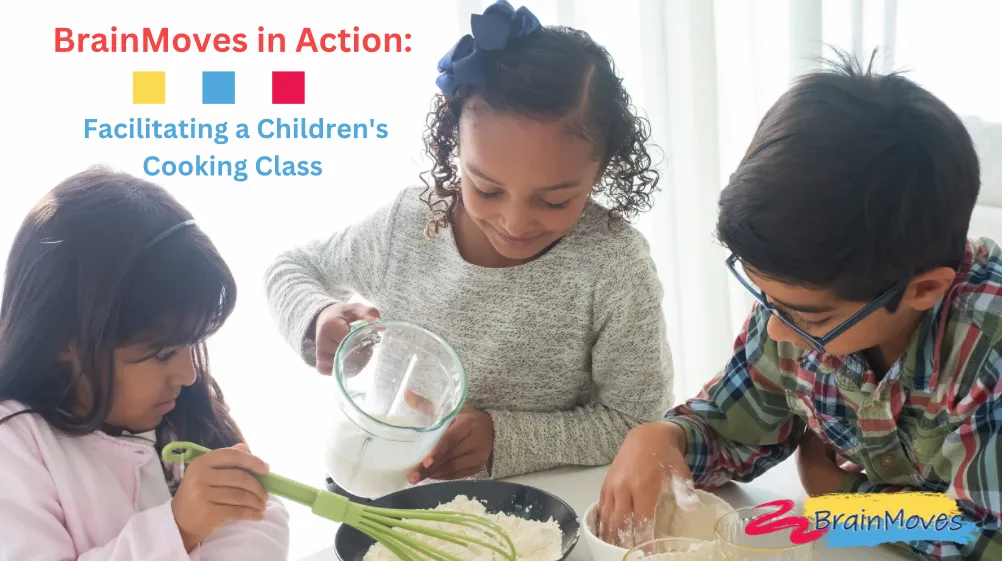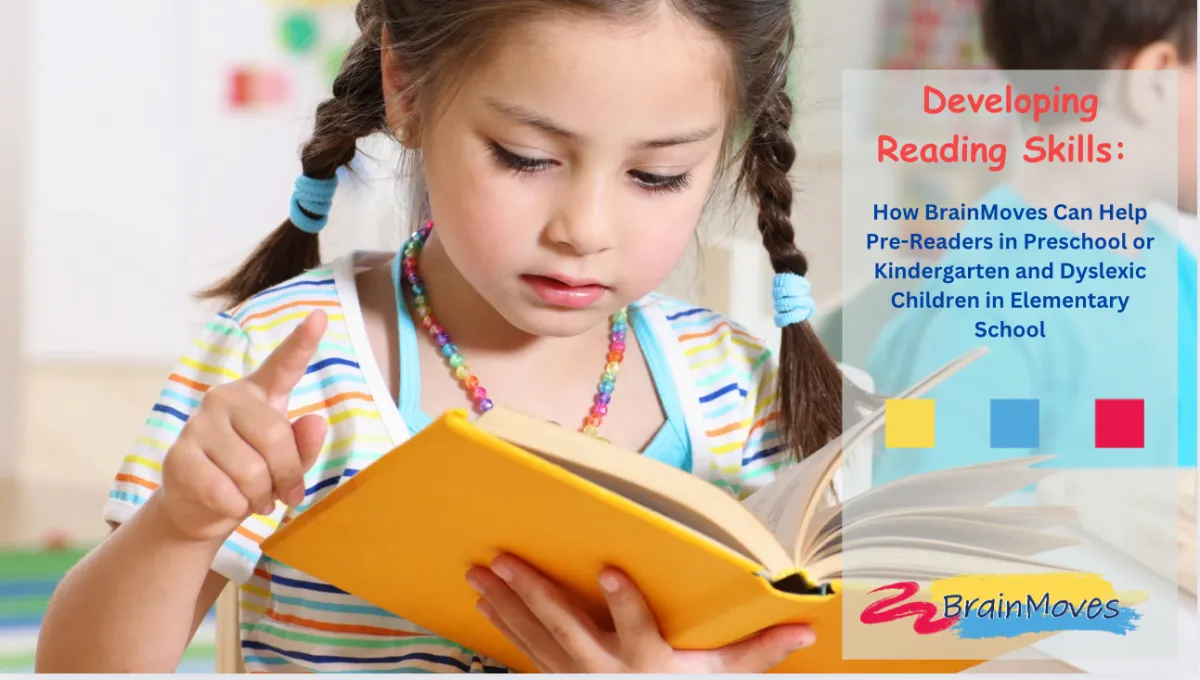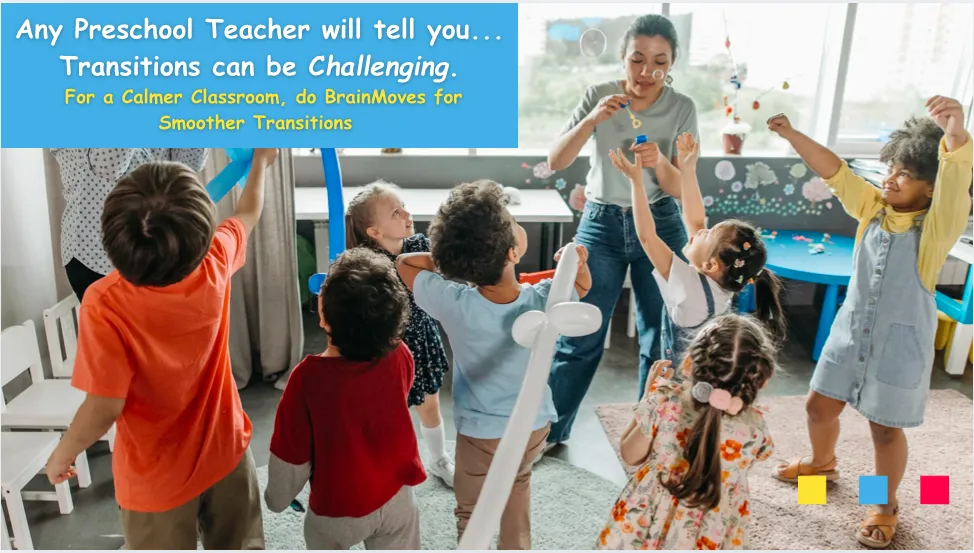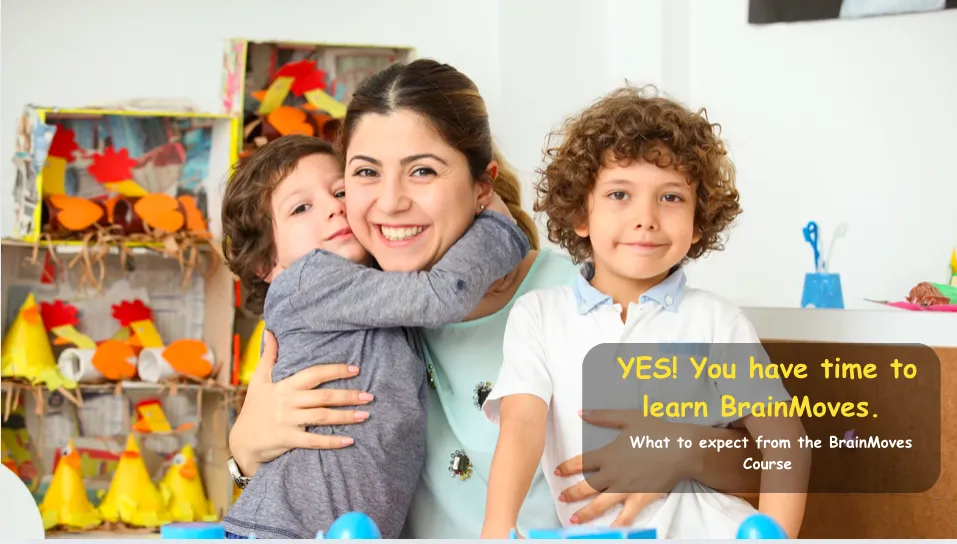BrainMoves in Action: Facilitating a Children's Cooking Class
Hi friends, you all know me, but you don’t really know me. My name is Elizabeth, and I help Diane Malik and BrainMoves with their marketing and support their website. I am also a trained and certified personal trainer, movement therapist, and yoga instructor. My job is to train and facilitate in a variety of settings, from performance to life skills like cooking, to movement therapy using BrainMoves, somatic therapies, and yoga. I love helping people with diverse brains and different abilities live their fullest and happiest lives, whether they’re pursuing the basic act of moving from place to place or a new hobby like cooking or performance driving. People say that this makes me seem all over the place, but the common thread is that if a human being is well-regulated and enjoying their school, work, and playtime, they’re living their best life and helping their friends and families live better lives through co-regulation. Hi friends, you all know me, but you don’t really know me. My name is Elizabeth, and I help Diane Malik and BrainMoves with their marketing and support their website. I am also a trained and certified personal trainer, movement therapist, and yoga instructor. Over the next few months, I will be writing a periodic column to share how I use BrainMoves in my work with different populations. Hopefully, this will help you see how you could apply the ideas of somatic supports and scaffolding with the simple actions of BrainMoves.
Developing Reading Skills: How BrainMoves can Help Pre-Readers in Preschool or Kindergarten and Dyslexic Children in Elementary School
New Blog Post DescriptionBefore children learn to read, they progress through phases of understanding how written language works. First, they learn to speak, make sounds, and then form words that gain meaning. This lets preschoolers express complex thoughts and stories. By this stage, children are also more aware of present, past, and sometimes future events. However, patience and understanding of future events may still be developing. This is important because to read, children must learn that shapes mean sounds, sounds make words, and that written and spoken words share meaning.
Any Preschool Teacher will tell you... Transitions can be Challenging.
For a Calmer Classroom, do BrainMoves for Smoother Transitions Every child can be challenged by the exciting nature of the preschool classroom. Preschool classrooms are designed to engage young minds while also preparing them for times when they have to sit, concentrate, and pay attention. This helps develop the habits that will serve them throughout their time in school and later in the workplace. Being able to sit, listen, and transition between tasks and conversations will also help them in social settings...
Yes! You have Time to Learn BrainMoves!
Are you considering doing BrainMoves with your child or incorporating it into your classroom but are unsure if you have the time to dedicate to learning? Regular readers of this newsletter know that my self-paced BrainMoves course is designed for busy parents and working adults. I created the course with audio that can be listened to in the car or while doing chores around the house, as well as 5.5 hours of brief, easily digestible interactive video lessons. I wanted to make sure that parents, teachers, and therapists could learn valuable skills that they could immediately apply, even while they were still going through the course lessons. Yet, many people still wonder, “What will you learn?” Here is what is included in my BrainMoves course.
